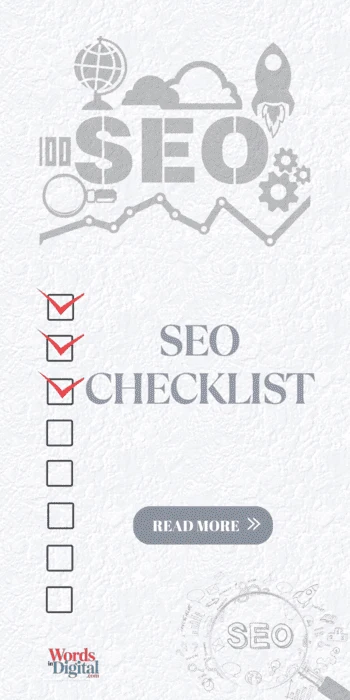
Contents
1.1. Why Many Digital Marketing Strategies No Longer Work and How Can We Really Reach People?
In the world of digital marketing, some tactics have been used so often that they have become clichés.
Methods that once worked lose their effectiveness as they are repeated over and over again.
The reason is simple: People are bombarded daily with dozens of emails, ads, social media posts, and sales pitches.
Our brains now recognize these patterns and defend themselves by thinking, “Here we go again.”
In the past, FOMO (Fear of Missing Out), scarcity tactics, or countdown timers motivated people to take action.
Today, they can have the opposite effect: annoyance, distrust, and disengagement from the brand.
What people want to buy now isn’t your product; it’s your intentions, your values, and the genuine connection you build.
In this article, I’ll address the 15 most clichéd tactics in digital marketing. First, I’ll show why these tactics no longer work, then I’ll share more natural and effective alternatives.
Let’s get started.
1.1. Scarcity / Limited Availability
Cliché: Those artificial “only 3 spots left” or “stock running out” warnings we see everywhere.
Problem: The phrase “only 3 spots left” now means “I’m lying right now”.
Alternative: Honestly state the real limitation. E.g.: “I can only work with 5 clients this month because I need to dedicate significant time to each one.”

This approach increases user trust while naturally creating the limited availability effect.
According to Harvard Business Review, 86% of customers trust brands that “clearly state their limits.”
1.2. FOMO (Fear of Missing Out)
Cliché: “If you miss this opportunity, you won’t find another one.”
Problem: The pushy language makes the customer feel manipulated.
Alternative: Provide real context. E.g., saying, “The next training session starts in 3 months. We’ll wait for you when you feel ready,” gives the other party a choice and comfort.

We can call this approach FOLA (Fear Of Losing Advantage). This way, people want to walk with you instead of running away from you.
1.3. Fake Social Proof

Cliché: “10,000 people bought it!” or suddenly appearing 5-star reviews that are all identical.
Problem: Artificial counters and fake reviews destroy trust.
Alternative: A “3-star but very detailed and honest” review is more valuable than a perfect 5-star rating. Show people’s faces, stories, and voices. A short video interview, a screenshot of a thank-you message, a photo taken by a user… These are more valuable than thousands of fake stars.
1.4. Clickbait Headlines
Cliché: “You’ll reach a 7-figure income level in no time!”
Problem: Headlines that don’t match the content create disappointment.
Alternative: Use headlines that are attention-grabbing but make accurate promises.
Example: A headline like “3 Mistakes I Made While Blogging and How I Fixed Them” is both intriguing and honest (if the content meets the expectations created by the headline).
1.5. Constant Discounts / Artificial Price Reductions
Cliché: “70% off – today only!” (but the price stays the same).
Problem: People realize it’s not real.
Alternative: Offer real discounts. E.g.: “Special launch offer, 30% off for one week only.” (The discount should genuinely end on the stated date.) Explain why the price will increase after the discount. “We’re now adding 1:1 support, so our costs have gone up.”
1.6. Fake Communication
Cliché: The same copy-paste thank-you message for every comment, impersonal automated responses.
Problem: Makes the brand seem cold and uninterested.
Alternative: Use automation to streamline the process, not to build relationships. Automate basic responses, but have real conversations handled by humans.
Example: Instead of replying to Instagram comments with “Thanks for the nice comment!”, a cafe could make a personal comment about the product in the photo (“I’m so glad you liked that cookie, the recipe took a lot of work :)”).
1.7. Fake “Complete Transparency” Statements
Cliché: “I’ll be completely honest with you…” We all know that this is usually followed by a sales pitch that isn’t very honest at all.
Problem: This opening is an admission of insecurity. It’s a fancy way of saying, “I’m not usually honest, but I will be now.”
Alternative: Prove your honesty with your actions, not your words. A transparent statement like, “I’m currently meeting with 3 clients and have 2 openings left for October. If you’d like to be part of the process, the best day for me would be [date],” is more effective than tons of “I’m honest” talk.
1.8. Free + Sales Pitch
Cliché: “Free e-book” → immediately followed by intense sales pressure.
Problem: People know that “free” is actually a sales tactic.
Alternative: Offer truly valuable free content and make your sales pitch part of a natural flow. If people believe in your generosity, they will believe in your product.
1.9. Fake Personalization
Cliché: “I’ve prepared a special offer just for you” (the same message goes to thousands of people).
Problem: Fake sincerity is worse than no sincerity at all. Misusing personal data in this way damages your reputation.
Alternative: Segment your audience and send genuinely personalized content to small groups. (For example, send “A new book by your favorite author” or “Happy birthday! Use this 10% discount on your special day” to those who bought a book last month).
1.10. Excessive Retargeting
Cliché: Flooding the entire internet with ads for a pair of shoes for anyone who looked at them once. This approach is like a salesperson following you home, to your workplace, and to the café you visit after you look at a product in a store. Creepy.
Problem: The feeling of being “followed” makes people feel unsafe and uncomfortable.
Alternative: Think of retargeting as a conversation. First ad: “The shoes you looked at.” Second ad: “Reviews from people who wear these shoes.” Third ad: “How can you style them?” Approach it with different content like this. Your goal should be to address a need, not to force a sale.
1.11. Artificial Authority Proofs
Cliché: “We’re in Forbes, we’re on BBC!” (with a paid press release). People now know these logos are sold as a “package.”
Problem: Authority cannot be bought; it must be earned. What is bought is not authority, but visibility.
Alternative: Share your real success stories. A video of your customer talking about how they transformed thanks to you, details of a real collaboration you did with a major brand… These cannot be bought and are much more valuable.
1.12. “Secret” and “Formula” Rhetoric
Cliché: “The one secret nobody knows that will change everything!”
Problem: People have realized these headlines are empty promises.
Alternative: Make clear promises. E.g.: “The 3 most effective methods for SEO content.”
1.13. Fake Email Subject Lines
Cliché: “Re: About our meeting” (no meeting ever took place).
Problem: It looks like spam and destroys trust.
Alternative: Subject lines that honestly reflect the content.
1.14. Pop-up and Exit-Intent Harassment
Cliché: Huge subscription boxes that pop up as soon as you enter the site and are difficult to close, or messages that appear when you try to exit, saying “Don’t go! I’ll give you a 10% discount!”
Problem: Annoying to users, increases bounce rate.
Alternative: Add value. After the visitor has spent some time on the site, a small, polite pop-up appears: “Did our content catch your interest? Would you like us to send you our weekly best content via email?“ Or, when exiting, ”Before you go, don’t forget to grab this guide we spent 3 months working on and are giving away for free :)” Your goal should be to help, not to block.
1.15. Constant Social Proof Counters

Cliché: “18 people are currently viewing this product.”
Problem: We all know this is software and can generate random numbers.
Alternative: Show live community interactions. Displaying the latest questions and answers about the product on your product page, or adding a widget showing an active Slack or Discord community, is much more effective. People are convinced by real conversations, not artificial numbers.
1.16. Greenwashing and Ethicalwashing:
Cliché: Using labels such as “sustainable,” “eco-friendly,” “ethical,” “fair,” and “responsible” solely for marketing purposes without genuine effort.
Problem: Consumers question these claims and quickly turn away from brands that are exposed as fraudulent.
Alternative: Back up your claims with concrete data. Share the process transparently. It’s not about being perfect, but about showing a sincere effort.
Example: A brand claiming to have “eco-friendly packaging” can explain how and to what extent it achieved this, the challenges it faced, and its goals in a blog post.
1.17. The “I started from scratch too” story
Cliché: “I was unemployed two years ago, now I’m a millionaire.”
Problem: Overly exaggerated. Not realistic. The “I did it, so you can too” message places the burden on one person.
Alternative: Tell the real story: “I made very little money the first year. Without my wife’s support, I would have given up long ago. Then…” (Doesn’t individualize success; shows it as a combination of factors like “support, luck, effort, and community.”) This approach gives your followers hope—without pressure.
2. Sincerity Wins, Not Tactics
Tactics are certainly important in digital marketing. But today, the real issue isn’t “which tactic you use,” but how you use it.
Remember:
- People instantly spot clichéd tricks.
- Loss of trust is more costly than short-term gains.
- Sincerity, transparency, and human language always win.
2.1. The 5 Rules of Authentic Marketing
1. If you make a promise, promise less than you can deliver.
Overpromising undermines trust. By setting expectations low and exceeding them, customers perceive you as reliable and surprisingly good. This builds long-term loyalty.
2. Instead of disparaging your competitors, clearly communicate your unique value.
Badmouthing competitors makes you seem aggressive, not professional. Honestly explaining your difference builds trust and leaves the comparison to the customer.
3. Admit your mistakes.
Admitting your mistakes doesn’t weaken your brand; it strengthens it. Because people trust honest brands, not “perfect” ones.
Sincerity saves your reputation in times of crisis.
4. Share criticism as well as positive reviews.
Sharing only praise creates a fake image. Showing criticism proves that your brand is open to learning and takes the development process seriously.
5. Instead of asking, “Why should you choose us?”, ask, “What do you expect from us?”
This perspective demonstrates a customer-centric approach. People connect with brands that put them at the center.
By asking questions to understand expectations, your solution becomes personalized, and you gain a special place in the customer’s eyes.
You can share this article on social media or get a summary with ChatGPT / Perplexity:


 Share
Share X
X ChatGPT
ChatGPT Perplexity
Perplexity









